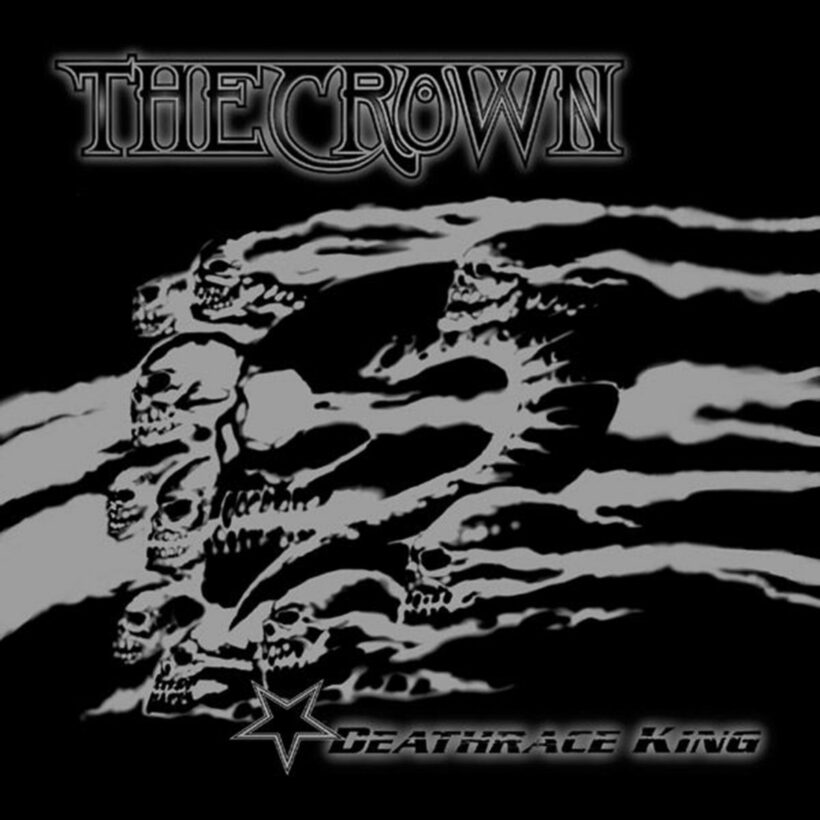
Crowning Achievement
The Making of the Crown’s Deathrace King
At the turn of the last century, Swedish death metal was in the midst of a power exchange. To the east, the chainsaw sound of Stockholm and its storied Sunlight Studios was waning. Meanwhile, the morning star was ascendant in the west; for better or worse, Gothenberg’s melodic sound was approaching ubiquity thanks partly to producer Fredrik Nordstrom’s Studio Fredman.
Between these two fires stood the Crown. Hailing from sleepy Trölhattan and owing allegiance to neither coastal scene, the quintet was led by songwriters Magnus Olsfelt on bass and Marko Tervonen on lead guitar, paired with fellow shredder Marcus Sunesson, mad dog vocalist Johan Lindstrand and high-speed drummer Janne Saarenpää. These deadly metalpunks offered a compelling middle path in 2000 with their high-octane sophomore outing, Deathrace King.
“Sophomore outing” isn’t entirely accurate, though. The quintet formed in 1990 as Crown of Thorns and released two records under that banner before a lawsuit by a Christian glam band forced them to drop the “of thorns.” Good riddance. These Knights in Satan’s Service moved to Metal Blade for their second “debut” LP, Hell Is Here, in 1998—a practice lap for Deathrace King’s stint as pack leader.
And KISS is as essential a reference point as any when it comes to the Crown. On Deathrace King, the band cobbled stadium rock, hardcore punk, thrash, death metal (melodic, Floridian and HM-2 varieties) into a single engine—see the “Detroit Rock City”-but-overclocked bass riff in “Rebel Angel” or the Mötley Crüe breakdown in “Blitzkrieg Witchcraft.” Saarenpää’s performance takes Mikkey Dee’s work in Mötorhead and cranks it into the red zone. The result is singular: a reconciliation between the unfulfilled death ‘n’ roll promise of Wolverine Blues and the death-thrash revival of Slaughter of the Soul—Tomas Lindberg even steps into the cypher with Lindstrand on album standout “Devil Gate Ride.”
Deathrace King introduced audiences outside of Sweden to the Crown, thanks to a high-profile tour supporting Cannibal Corpse and Nile in the United States, and the Haunted in the U.K. Still, it didn’t result in a legion of imitators like Wolverine Blues or Slaughter of the Soul did. Nor did it provide much of a financial windfall for the Crown. Defying easy categorization has its drawbacks.
One idea cropped up in nearly every interview given for this article: There are only two kinds of metalheads—those that love the Crown and those that haven’t heard them yet. If you’re in the latter camp, consider yourself invited to buy the ticket and take the devil gate ride as we induct Deathrace King into the Hall of Fame.
Need more classic The Crown? To read the entire seven-page story, featuring interviews with the members who performed on Deathrace King, purchase the print issue from our store, or digitally via our app for iPhone/iPad or Android.







